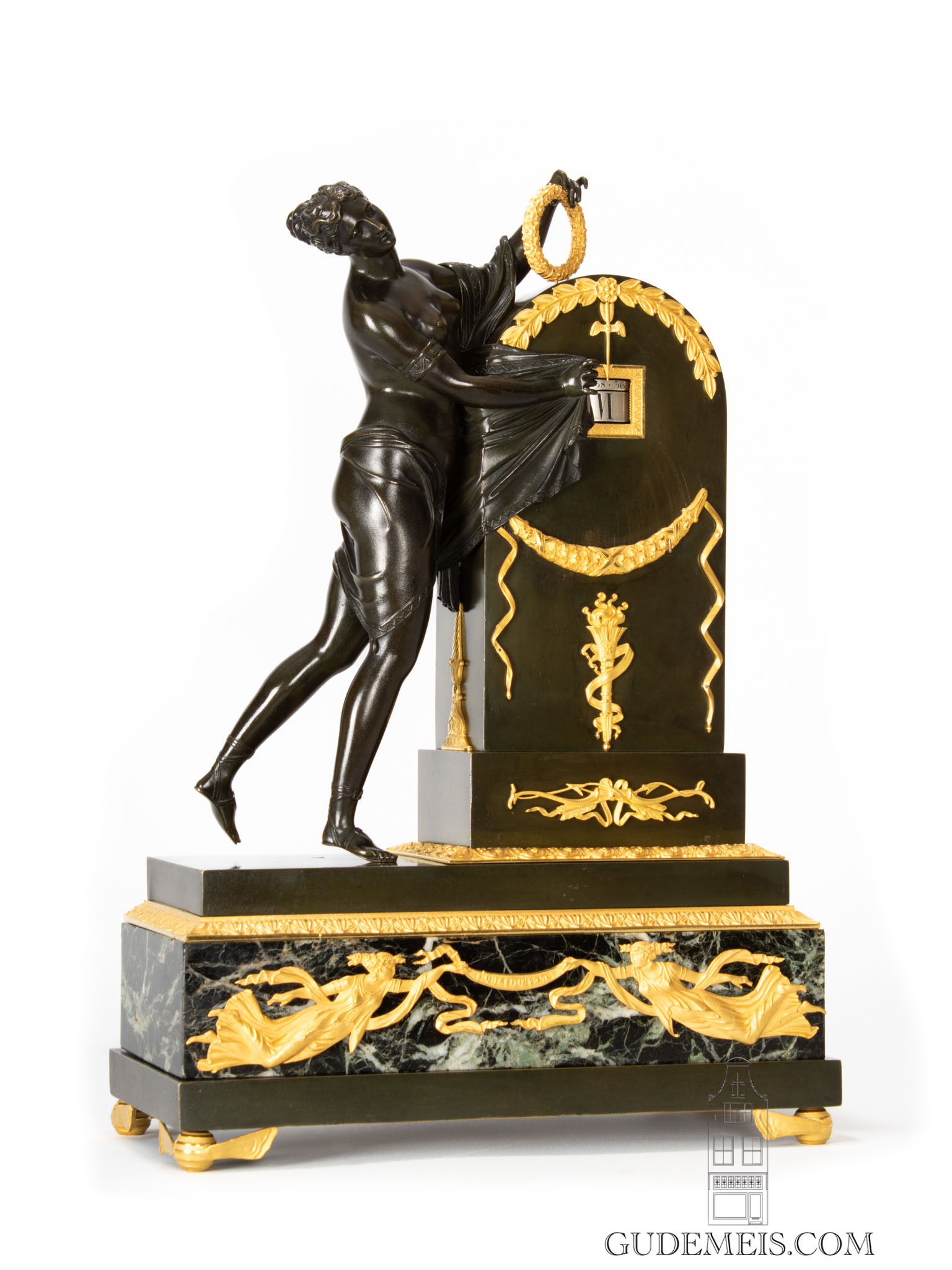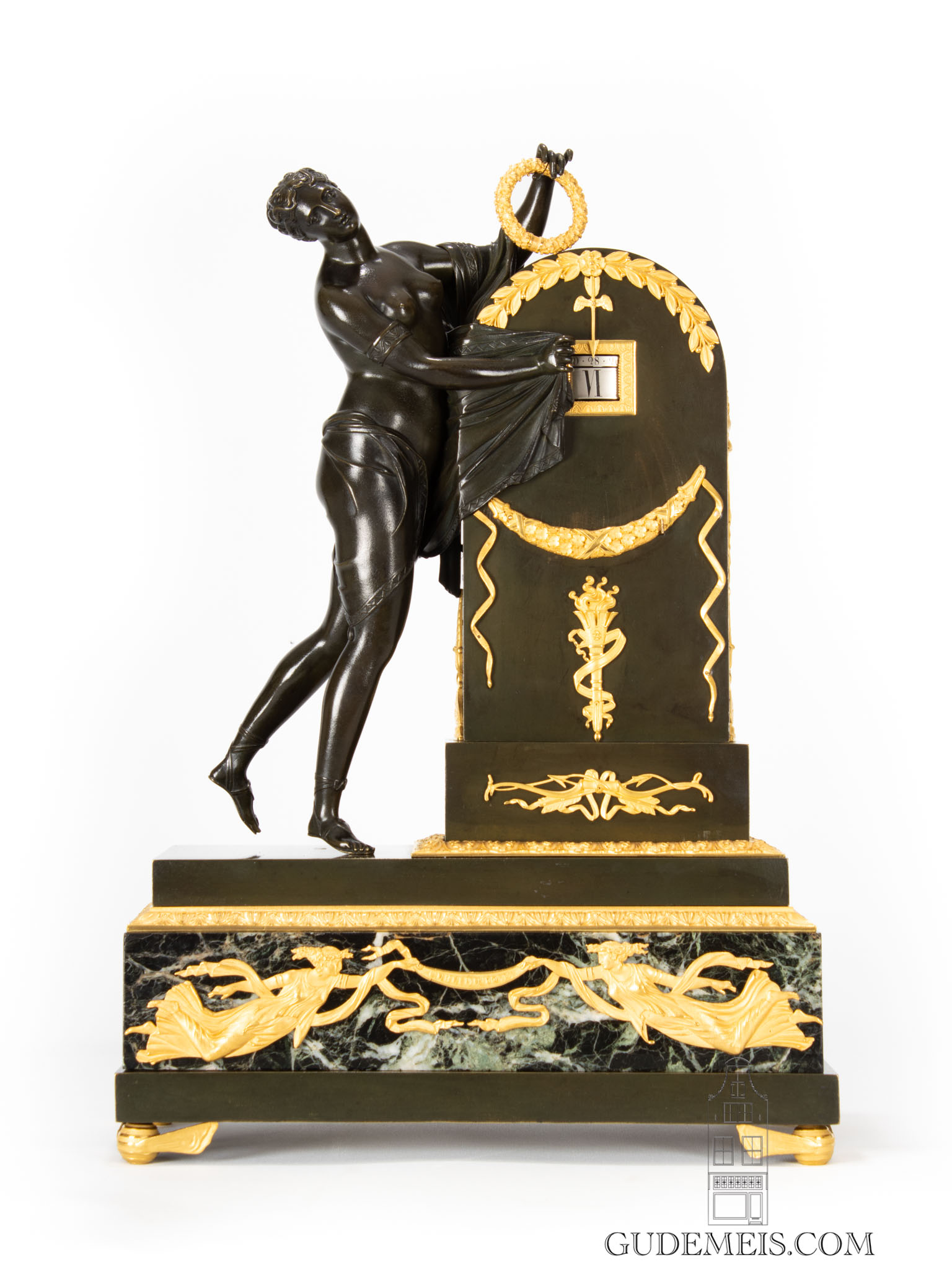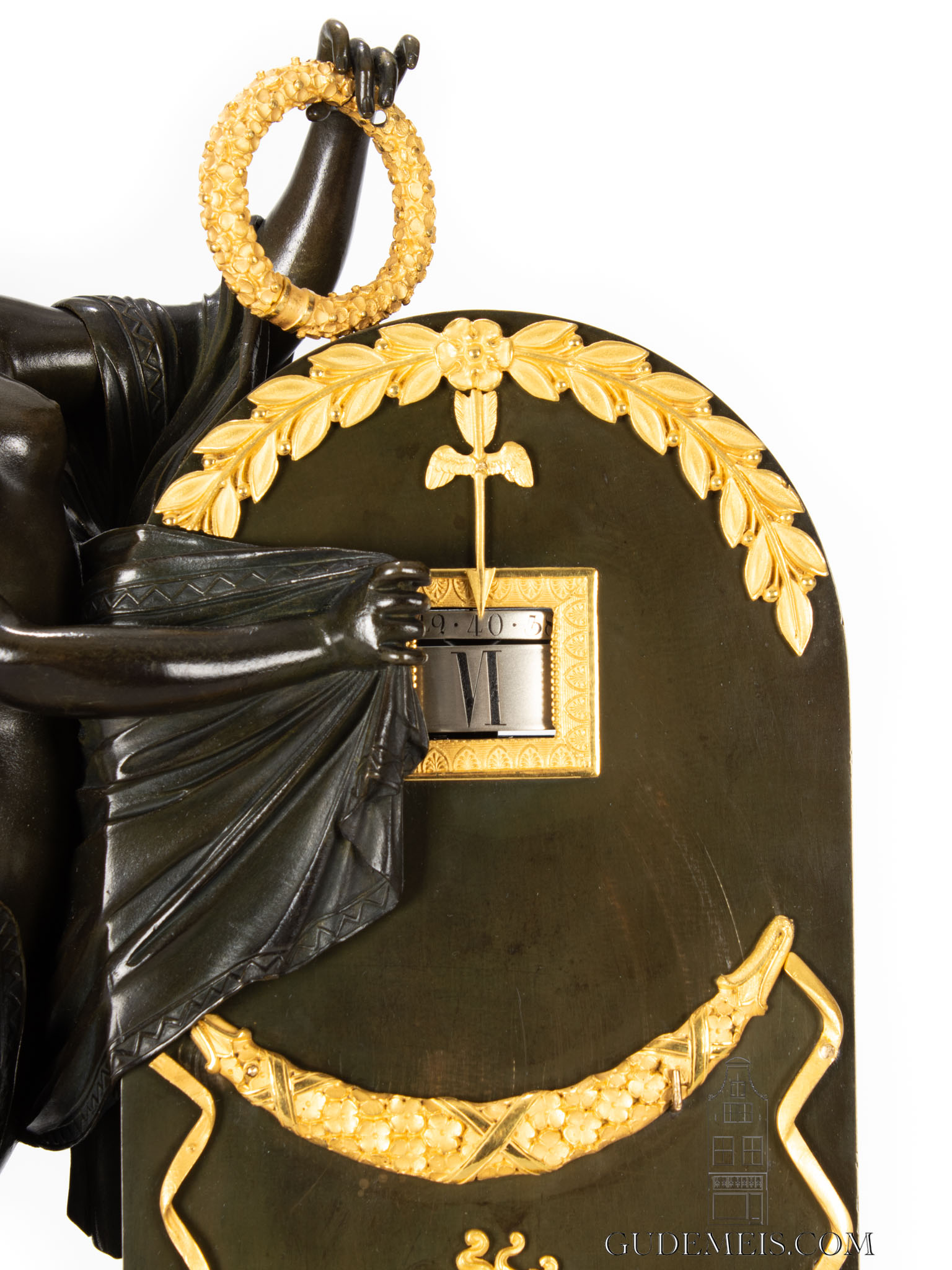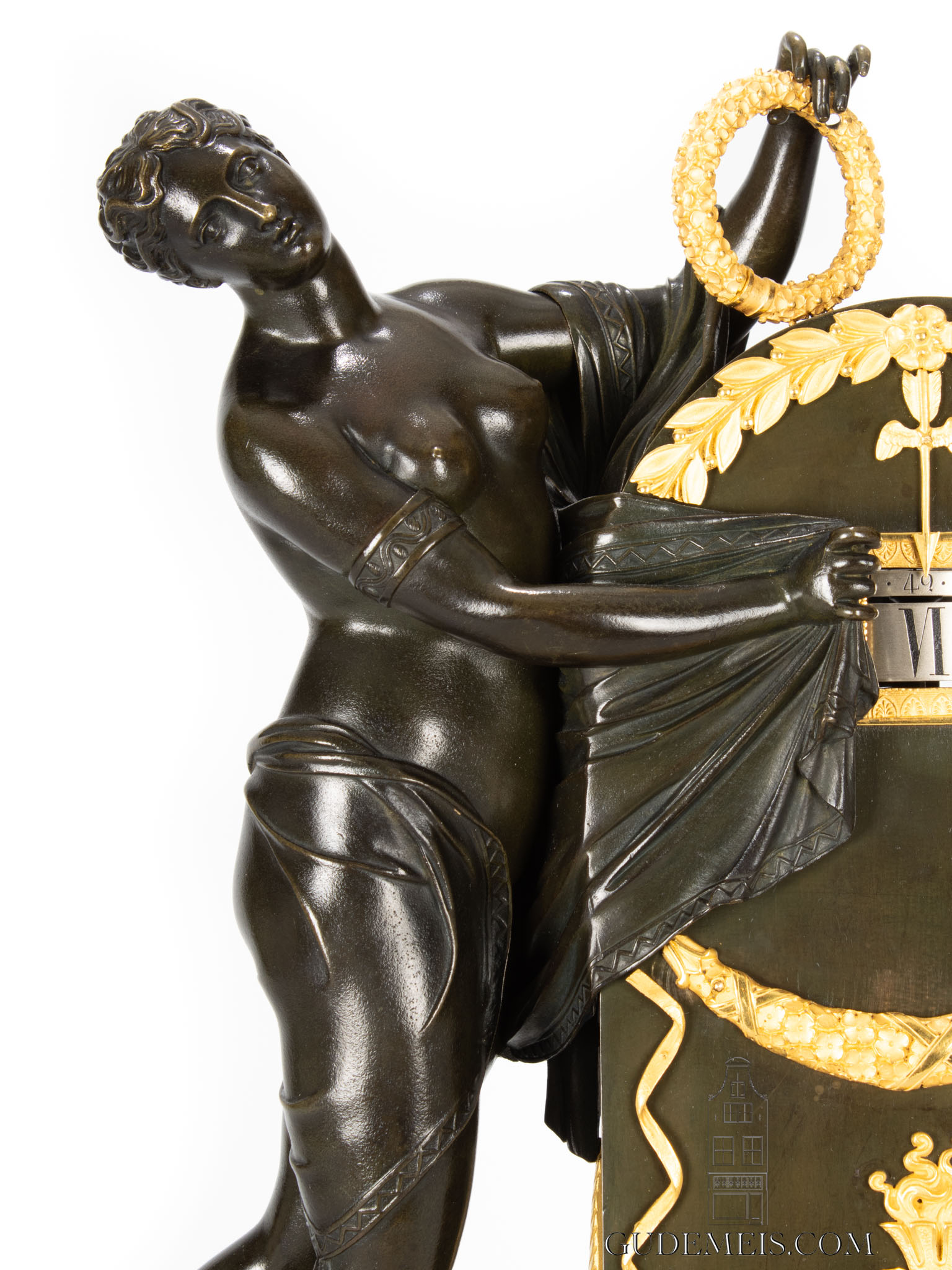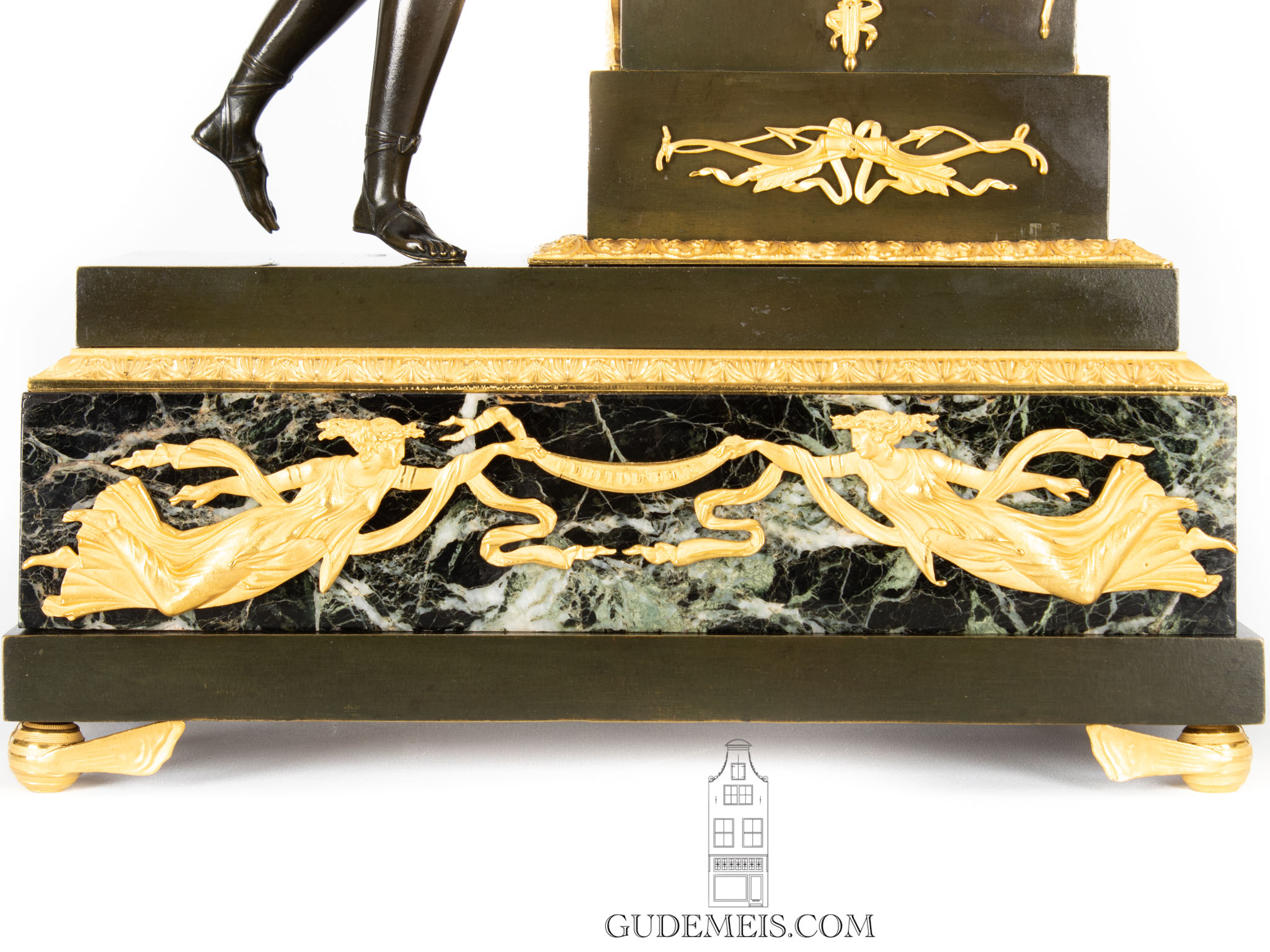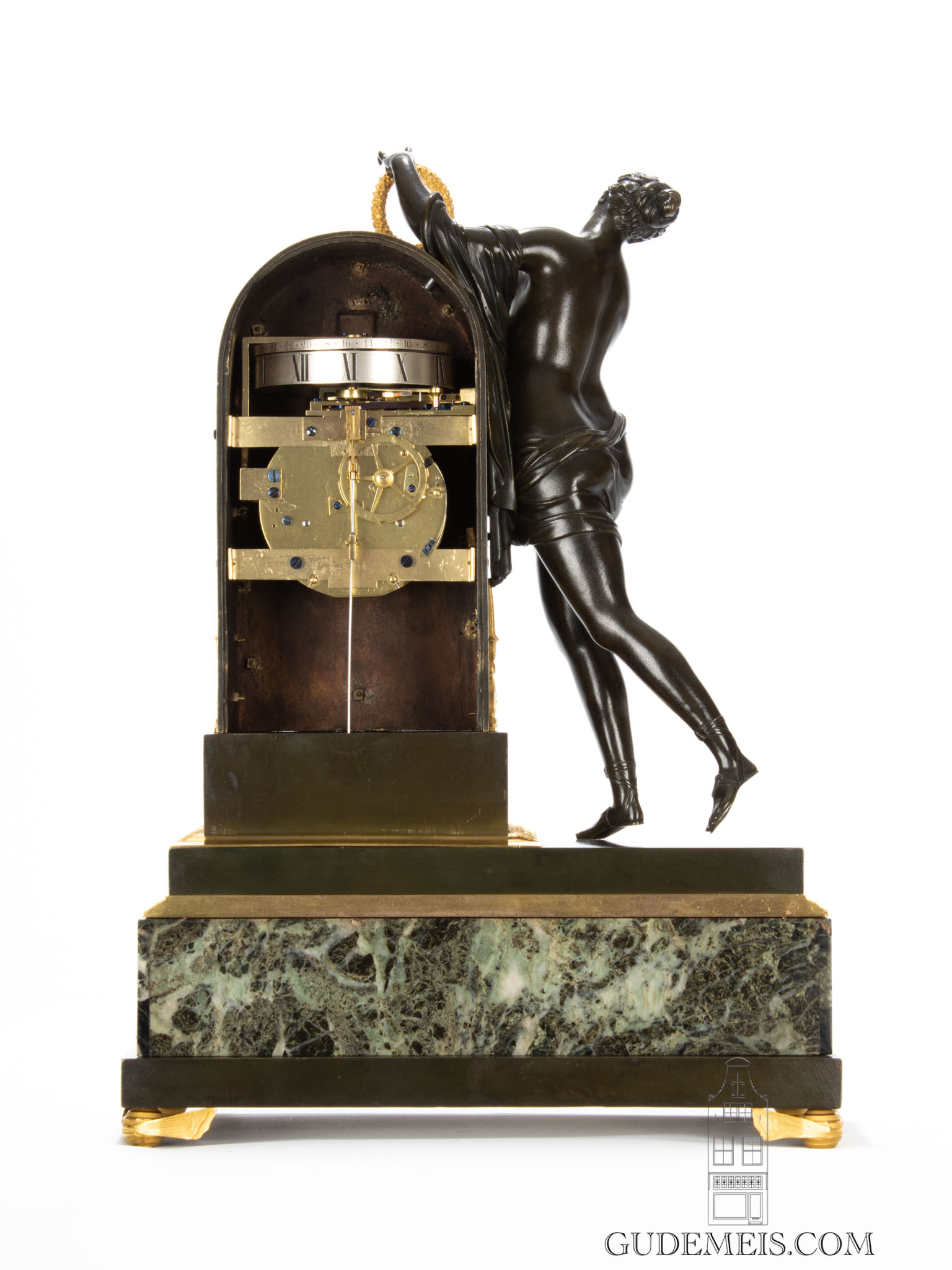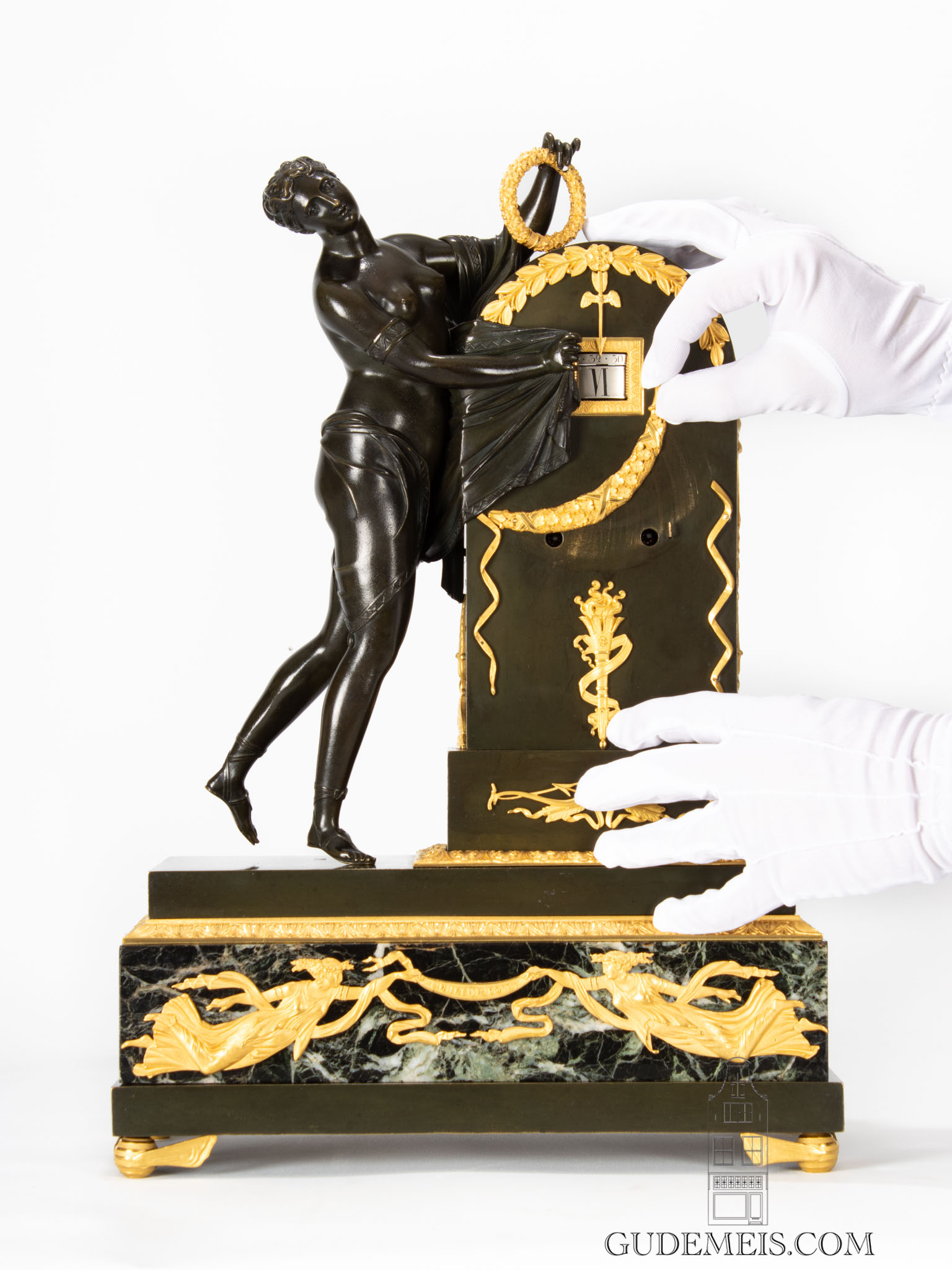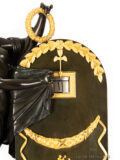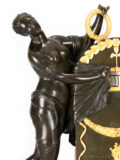A French Empire sculptural mantel clock ‘Oubli du Tems’, Claude Galle, circa 1810
Omschrijving
Claude Galle
This model was designed by Simon-Louis Boizot and executed by the famous bronzier Claude Galle. In 1806, the model was first exhibited at the l’Exposition des Produits de l’Industrie. In the same year, a clock of this model was presented to Napoléon Bonaparte, which now is on display in the Château Malmaison. Château Malmaison is the chateau that belonged to Napoleon I and his wife Joséphine de Beauharnais who bought it in 1799. Claude Galle (1759-1815) is considered as one of the best ‘bronziers’ of the late Louis XVI and Empire era. His craftsmanship is reflected not only in his artful designs but also in the quality of the bronzework and its gilding. Next to the fantastic quality of the bronzework, there are the revolving chapter rings that make the clock even more interesting. A beautiful object and a special clock in one.
Countwheel striking
The movement of eight day duration is driven by two spring barrels. It has an anchor escapement combined with a silk suspended pendulum. The clock has half-hour countwheel striking on a bell.
Cercles tournants
The clock has two so-called ‘cercles tournants’, silvered chapter rings that revolve along a fixed a pointer in the shape of an arrow with wings. The minute ring has Arabic numerals and rotates regularly. The hour ring has Roman numerals and jumps on exactly on the hour. They are visible through a square aperture with a gilt bezel that is fitted in an arched patinated bronze case. At the top it is decorated with Acanthus leaves and below with a bow and arrow. The centre section is adorned with a mount in the shape of a torch and a slide-up arched leaf mount above it which cover the winding holes. The whole is flanked by an elegant lady holding a laurel wreath in one hand and a robe in the other with which she is about to cover the chapter rings. The whole stands on a rectangular verde antico marble base with an acanthus border which is decorated at the front with two classical women holding a banner that reads ‘oubli du tem(p)s.’ The patinated bronze plinth is raised on winged ball feet.
